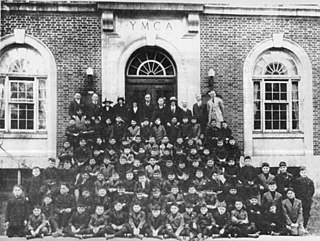 W
WThe relationship between the Armenian genocide and the Holocaust has been discussed by scholars. While a direct causal relationship between the Armenian genocide is not proven, it has been suggested that Holocaust perpetrators were inspired by the Ottoman example and the legacy of impunity. Both the Holocaust and the Armenian genocide are considered paradigmatic cases of genocide in the twentieth century.
 W
WThe confiscation of Armenian properties by the Ottoman and Turkish governments involved seizure of the assets, properties and land of the country's Armenian community. Starting with the Hamidian massacres in the mid-1890s and peaking during the Armenian genocide, the confiscation of the Armenian property lasted continuously until 1974. Much of the confiscations during the Armenian genocide were made after the Armenians were deported into the Syrian Desert with the government declaring their goods and assets left behind as "abandoned". Virtually all properties owned by Armenians living in their ancestral homeland in Western Armenia were confiscated and later distributed among the local Muslim population.
 W
WArmenian genocide denial is the claim that the Ottoman Empire and its ruling party, the Committee of Union and Progress (CUP), did not commit genocide against its Armenian citizens during World War I—a crime documented in a large body of evidence and affirmed by the vast majority of scholars. The perpetrators denied the genocide as they carried it out, claiming Armenians were resettled for military reasons, not exterminated. In the genocide's aftermath incriminating documents were systematically destroyed, and denial has been the policy of every government of the Republic of Turkey as of 2021.
 W
WThe Georgetown Boys, or Canada's Noble Experiment, was the first humanitarian act on an international scale by the country. This effort was spearheaded by the Armenian Relief Association of Canada. At this time Canada started to take in orphaned children from the Middle East. The first 50 came in 1923. The following year another 40 boys came. The boys came to Canada from the Middle East after they had been orphaned during the Armenian genocide. By the end of the project, a total of 110 came to Georgetown, Ontario, and eventually came to be called the Georgetown Boys.
 W
WThe burning of Smyrna destroyed much of the port city of Smyrna in September 1922. Eyewitness reports state that the fire began on 13 September 1922 and lasted until it was largely extinguished on 22 September. It began four days after the Turkish military captured the city on 9 September, effectively ending the Greco-Turkish War, more than three years after the landing of Greek army troops at Smyrna on 15 May 1919. Estimated Greek and Armenian deaths resulting from the fire range from 10,000 to 125,000.
 W
WOperation Nemesis was the assassination of Ottoman perpetrators of the Armenian genocide and Azerbaijani people held responsible for the 1918 massacre of Armenians in Baku between 1920 to 1922. It was carried out by a clandestine cell of the Armenian Revolutionary Federation and masterminded by Shahan Natalie, Armen Garo, and Aaron Sachaklian. It was named after the Greek goddess of divine retribution, Nemesis.
 W
WThe Istanbul trials of 1919–1920 were courts-martial of the Ottoman Empire that occurred soon after the Armistice of Mudros, in the aftermath of World War I. The leadership of the Committee of Union and Progress (CUP) and selected former officials were charged with several charges including subversion of the constitution, wartime profiteering, and the massacres of both Armenians and Greeks. The court reached a verdict which sentenced the organizers of the massacres – Talat, Enver, and Cemal – and others to death.
 W
WVaragavank was an Armenian monastery on the slopes of Mount Erek, 9 km (5.6 mi) southeast of the city of Van, in eastern Turkey.
 W
WFollowing the Armenian genocide, vorpahavak was the organized effort to "reclaim" women and children who had been abducted and forcibly converted to Islam during the genocide.